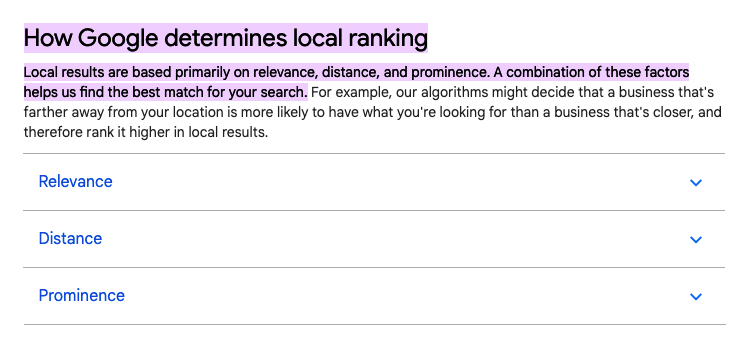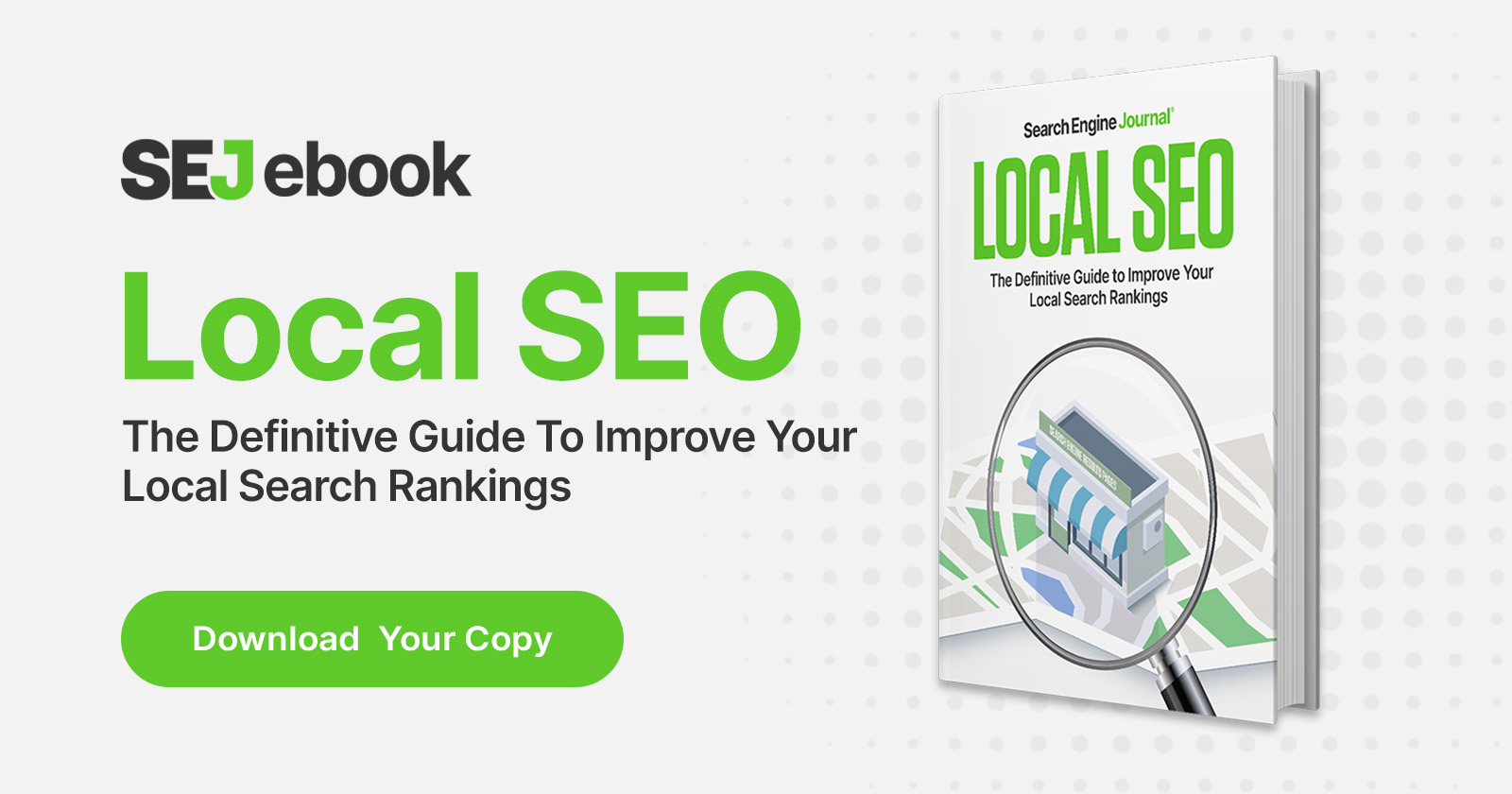What Is Local SEO & Why Local Search Matters via @sejournal, @mirandalmwrites
If you don't have a dedicated local SEO strategy, you could be missing out on valuable opportunities to get found and engage customers. Here's why. The post What Is Local SEO & Why Local Search Matters appeared first on...

Local search is an integral part of any SEO strategy targeting customers in a specific region, city, or neighborhood.
Simply put, local SEO is where you focus to improve your rankings and visibility in local search results such as Google’s Map Pack/Local Pack.
Organic SEO is how you improve webpage rankings in organic search. How your website ranks in those organic results can positively influence your Local Pack rankings, as well.
Organic listings are another great opportunity for your local business to appear in front of motivated searchers when Google determines that the query has local intent.
So, although local and organic SEO are interconnected in these ways, each requires a unique strategy with different optimization tactics.
Let’s start at the beginning – what is local SEO and why does local search matter?
What Is Local SEO?
Local SEO is the practice of search engine optimization for local search results.
On Google, that means helping your business listing in the Local Pack/Map Pack rank higher and appear more often in response to a greater volume of relevant queries.
Think of the last time you were out in the world, searching for something you needed. Maybe it was [men’s shoes], or [daycare providers], or [coworking spaces].
Google’s mission is to deliver searchers the best answer for any query.
And when its algorithms detect that your intent is local – that you are looking for something in the area around you – those Map Pack results will appear prominently on the first page of the search results.
They may be complemented by organic results about businesses and services in your local area, too.
If you search for something like [Mexican restaurants open now], local results may appear as the default view above all organic content. Google has detected that you have an immediate, local need.
The information available in local search results – business name, address, phone number, website, photos and videos, customer reviews and star ratings, and more – is more likely to answer that need than a plain blue link.
Adhering to Google’s Webmaster Guidelines and creating a great user experience on your website are best practices for SEO in general.
This is essential if you want your website to rank in organic search results where Google has determined there is local intent to the query.
But, you can appear in the Map Pack without even having a website, as MapPack results are largely informed by your Google Business Profile (GBP) listing. They might include information Google has compiled from other places around the web and even user suggestions, too.
Google has a separate set of guidelines for local SEO, too, the most important of these being its ‘Guidelines for representing your business on Google.’
These guidelines are essential for maximizing your visibility in the Map Pack and avoiding getting your listing suspended.
As you work through our Local SEO Guide, keep the differences between local organic and the Map Pack in mind.
At times, we’ll talk about Google search algorithms, technical SEO for your website, on-page optimization of your webpages, etc. These topics refer to your opportunities to appear in local organic results and to support Map Pack rankings with your website’s presence.
As you’re reading about local reviews and star ratings, Google Posts, and other elements of your GBP, you’re learning about local SEO as it pertains to local results you see in Google Maps.
Why Local Search Is Important
Here are a few stats that prove how important local search continues to be for businesses:
According to Google, 76% of people who conduct a local search on their smartphone visit a business within 24 hours, and 28% of those searches result in a purchase. 30% of all searches it processes are related to location, also according to Google. 61% of consumers said in a recent local search survey that they search locally every day. A recent local SEO survey found that 82% of consumers read online reviews for businesses during a local search and spend close to 14 minutes doing so before making a decision. 86% of people rely on Google Maps to find the location of a business. Yelp appears in the top five search results for SMB searches 92% of the time. Worldwide, 74% of in-store shoppers who performed their search before physically arriving at the store said they searched for things like [closest store near them], [locations], [in stock near them], and other types of hyperlocal information. More than half of Internet users worldwide use a mobile device for their local searches. 83% of searchers use Google Search to learn more about nearby businesses; 55% use Google Maps, 44% Apple Maps, 39% turn to Yahoo, and 31% choose bing.How Google Determines Local Ranking
Google keeps its organic search ranking algorithms a closely guarded secret but is much more open about what it takes to rank in local results.
The three main categories of local ranking factors, according to Google, are:
Relevance. Distance. and Prominence. ‘How to improve your local ranking,’ Google, screenshot by author, January 2022
‘How to improve your local ranking,’ Google, screenshot by author, January 2022
“Relevance refers to how well a local Business Profile matches what someone is searching for.
Add complete and detailed business information to help Google better understand your business and match your profile to relevant searches,” Google states in its help resource on how to improve your local ranking.
Google defines distance as “how far each potential search result is from the location term used in a search. If a user doesn’t specify a location in their search, we’ll calculate distance based on what we do know about their location.”
And prominence in this context refers to how well-known Google considers that business to be. This is perhaps the most complex of the local ranking factor categories, as search algorithms try to factor offline prominence into the equation, as well.
According to Whitespark’s ‘2021 Local Search Ranking Factors’ survey, these are what local SEO experts believe are the top Local Pack ranking factors:
GBP primary category. Keywords in the listing title. Proximity of the business address to the searcher’s location. Physical address in the city of search. Additional GMB categories. High numerical star ratings. Completeness of GBP listing. Quality and authority of inbound links to the associated domain. Keywords in native Google reviews.Improving Your Local Search Presence
As you can see, local search is an essential channel for businesses of all kinds that serve local customers – franchises, retail chains, so-called Mom & Pop shops, financial services brands, service providers, enterprise brands, and SMBs alike.
In ‘Local SEO: The Definitive Guide to Improve Your Local Search Rankings,’ you’ll find everything you need to know to develop and implement a successful local SEO strategy.
You’ll learn:
The top local ranking signals you need to know and why they matter. How to create a winning local SEO strategy. Tips and a process for analyzing the competition in local search results. Why accurate NAP information and user experience are so important in local SEO. How and where to find the best local link building opportunities. Why reviews and star ratings matter – and how to make the best possible use of them. How to completely optimize your GBP listing. All of the different attributes you need to know to help your GBP listing stand out and convert customers. Local SEO and listing management tools to save you time and improve your performance. And a lot more.You’ll hear from local search experts Ben Fisher, John McAlpin, Alexandra Tachalova, Marshall Nyman, Maddy Osman, and others as they share their best tips and advice to help shape a strategy built for your business.
Download the guide free right here.
Featured Image: Paulo Bobita/Search Engine Journal

 Hollif
Hollif 

























.jpg&h=630&w=1200&q=100&v=6e07dc5773&c=1)






